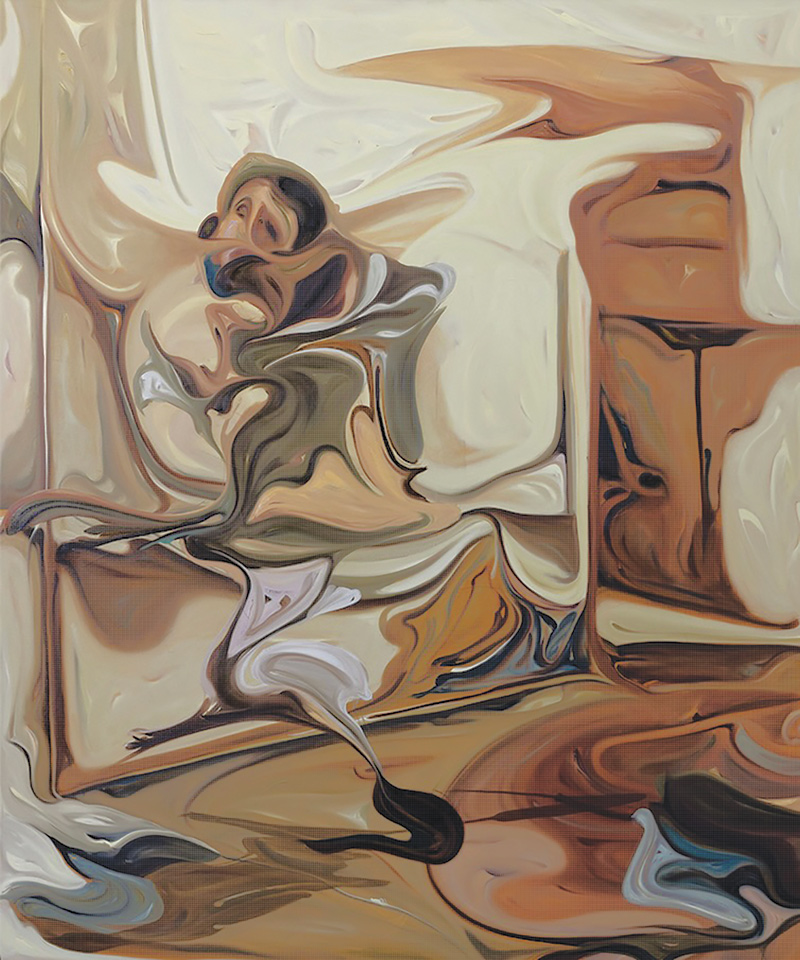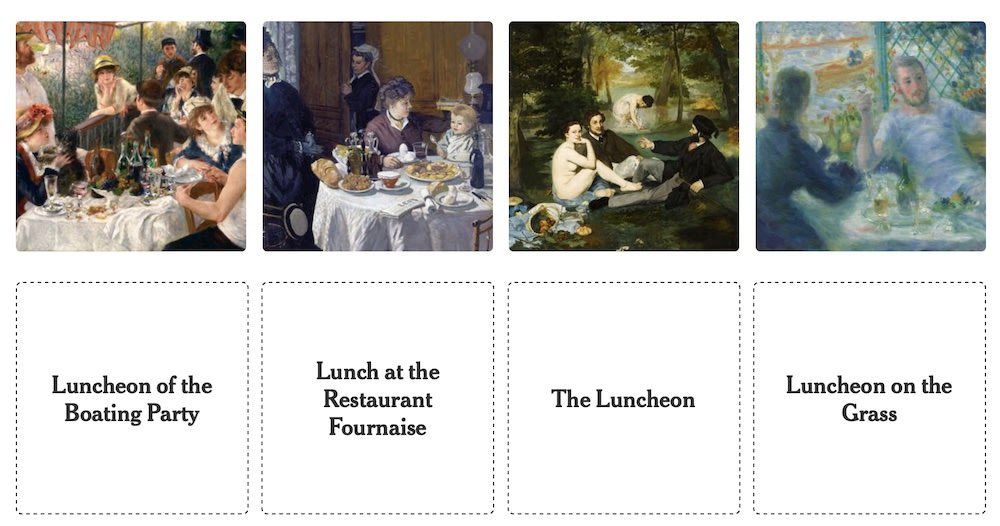Life After Art School: Making Transitions and Transactions – Part I

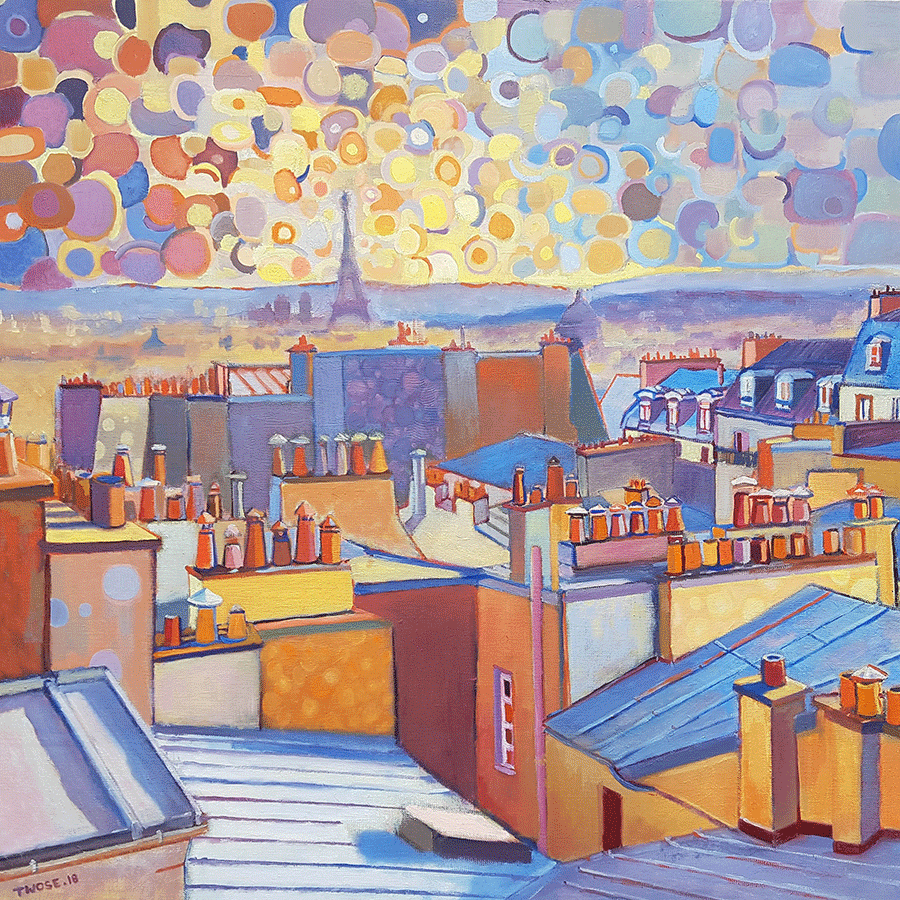
Life After Art School is an interview series by a former CGN Intern. The first part was written in 2014.
This five-year follow-up is broken up into three parts:
• Life After Art School: Five Years Later
• Life After Art School: Making Transitions and Transactions – Part I (below)
• Life After Art School: Making Transitions and Transactions – Part II
By MEGAN BONKE
As was the case when I wrote the first Life After Art School article for CGN in 2014, I talked to other artists to get their perspectives.
I tried my best not to shy away from questions about financial challenges, and I hope my own story as well as the thoughts and answers from another artist helps others move closer to an understanding of life as a professional artist.
My first follow-up interview was with French artist David Twose, who is currently doing an artist residency in his native France, but he is also planning for a spring 2019 show in suburban Lake Forest, Illinois.
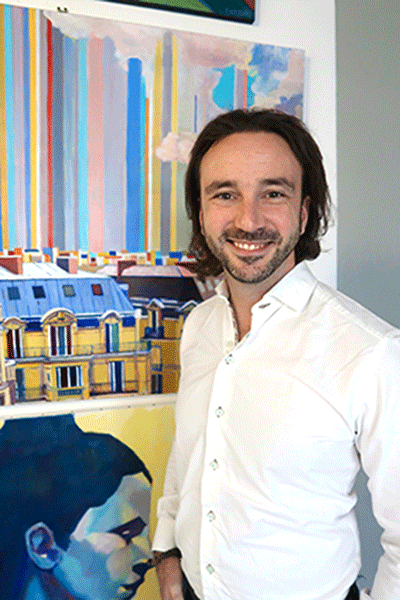
David Twose, 41, Painter
Megan Bonke: When did you decide you wanted to be an artist?
David Twose: It’s a tricky question. As a professional, it’s when I quit my previous job. As an artist, I've always wanted to be one – I’ve been drawing since I was a kid. When I worked in a professional corporation, I was taking drawing and painting lessons after work for almost eleven hours per week, in addition to my full time job.
MB: What did you do for work before you were a full time artist?
DT: I had been working for 16 years at a car company called Peugeot S.A (PSA Group) of which there are several brands: Peugeot, Citroën, DS, Opel, and Vauxhal. I was mainly doing marketing and communication there for the international markets.
MB: What was the catalyst for making the switch from art as a hobby to art as a career?
DT: Art was always deeper than a hobby, a lot more than that. The big shift occurred when I realized I was very comfortable for 16 years in the same company. I felt that it was so easy to continue working there until retirement. I imagined myself 20 years later, at the age of 60. I projected myself at this age and saw myself looking back and trying to see what I had achieved. That freaked me out. I was not at the right place. The right place for me was making art.
MB: Where have you studied, what did you study, and how far does your education extend?
DT: I went to business school. I was quite good at school, so I went to what’s called “preparation for business school” in Lyon, France and was able to succeed to the renowned Graduated School of Business in Nancy, France. I finished my Business studies in Montreal, Canada at McGill University, as well. I was in preparation school for two years and business for three years; that’s five years.
MB: Where have you studied art, and did you take any art classes at university?
DT: From ages 16 to 18, I took art classes in school. After that, I took a lot of night classes and during the weekend as well.
MB: Did anything in your studies (business marketing or fine art) prepare you for running your own business as an artist?
DT: My communications and marketing experience has helped me a lot. Part of my job at the time was to build communication strategies and help our companies, located in other countries, apply them locally. Having said that, when I do communications for my paintings, I try to apply the basic rules that I used to apply when I was advising others. I try to be consistent in the message that I deliver for the product, which is my painting. Sometimes it’s hard. And the funny thing is that looking back at when I used to oversee and evaluate the communications, I notice that I make the same mistakes. For the same thing I would criticize, I find it difficult to be my own judge.
What helped me was to first build my website immediately after I quit my job. I also created business cards and advertisements, such as on Instagram and Facebook. From what I’ve seen, not many artists prioritize that. I also have a portfolio that I take with me on my exhibitions. Not all artists have this communication kit that I have. Artists have told me they don’t want to do it because either they feel that they are only artists and they are not yet in a position to market their art, or they don’t think they have the skill set. Many don’t even consider how to market their art, because it is totally out of their range of thoughts.
Just last December I created a company to make the process of selling easier, for which I had to hire an accountant to help me set it up. When I created the company, I opened the range of activities to be available for other artists as well. With this company I can also give advice to other artists regarding their communication strategies.
MB: Can you elaborate on these rules for marketing?
DT: I should be able to do it; it’s nice to talk with you about it because it reminds me to focus more. The communication strategies I apply are about the process of how I create and why I want to create, and it’s all based on one important word I call abstractivation. When I paint landscapes, I try to see the abstract things that exist in reality—the shapes of a tree, a building, a shadow, etc. I want to expose and amplify these abstracted things that I see in reality. For instance sometimes when I paint, I turn the canvas 180 degrees to forget that it’s a landscape, and instead, I try to see it as an abstract painting. In terms of communication, I’m trying to focus on that word, abstractivation, as my credo—what I believe. I believe there are abstract things in reality, and these are very strong and can bring us to another dimension—something spiritual. My communication is based on this pillar of my work. It’s the way I work, and the way I see art.
MB: How long have you been a full time artist?
DT: I quit my job in June 2017 and have been pursuing art professionally ever since.
MB: Can you describe the first year of working as an artist full time?
DT: The first month was a bit weird, because I went on holiday to Canada just after I quit. While I still felt like I was on holiday, at the same time I knew that I left my secure zone. That was very frightening. I was scared. Before, when I was part of a company, it was like I was on a big boat, and when I quit, I was in deep water. Then I had moments where I would remember myself painting outside, and I would have otherwise been in the office; that was a real pleasure.
I have never worked so hard since I stopped working. As a professional artist, you have to do everything. Of course you have to paint. You also have to do the communication. You have to make all the decisions. When you work for a company, you have to make some, but others take many responsibilities. My day is usually made of painting and entrepreneurial decisions: a budget to work within, timing management, and meeting with people. At the same, you have to not try to manage everything, and go with the flow. Because that’s when things happen, when you don’t schedule everything and you follow the good vibrations around you. The best things happened to me when I wasn’t searching for them. Helping others is one of these things. When I help others, I feel pure pleasure and good things happen for me also. I did not experience this when I was working in a private company.
MB: How has your artwork changed since making art your career?
DT: Because I have more time to paint, I can do more research and exploration in order to produce more intimate works. I want to be more in the concept and because I have more time, I can dig in. I also have the motivation to produce because of things like my upcoming show for example show in Lake Forest that is coming in May. I actually I have to produce for this show. Before I painted what I wanted and when I wanted. Now, I have the parameter of an upcoming show date dictating my production. I also have some commissions to complete. I have to manage myself in order to complete the work.
MB: What kind of subsidies/benefits have you been getting from the [French] government since becoming an artist and how long do those last?
DT: Depending on how you quit your company in France, you can acquire some pensions from the state. And that was my case. I had this chance to receive money from the government, which is not at the level of my previous salary. Nevertheless, it helped me to live in a proper way and give a lot to my business as an artist. I will have this help until mid 2020. I have this time to become autonomous financially.
MB: What does applying for these subsidies/benefits involve?
DT: It’s not like these benefits don’t come from somewhere - they are essentially the unemployment tax withheld from my paycheck over the last sixteen years. Usually receiving these benefits means you have to look for a job, but because I created a company they should not ask me to look for a job.
MB: What kind of financial burdens have you been experiencing since becoming an artist full time?
DT: Not much because my level of finances are okay. I’m still live in the same apartment. I try to spend less. The funny thing is that when I was working and I’d leave the office, I wanted to buy things. I wanted to go to the shops with high tech things. So I spent the money that I earned on the things that I bought. And now I don’t need any of these things anymore. And I think it’s because I like what I do. I don’t need anything other than what I’m doing. At the end of the day, I have less money and spend less money without much effort.
MB: Have you noticed any major differences in the way you approach art versus your artist peers in the states?
DT: Not really. I meet a lot of French artists because I am in an art residency here in France. There are many types of artists, even in the small place that I work. Many of them are French, but they all do different things. I do see a difference between French and American buyers. Most of the buyers that I’ve had so far that come to my residency have been American. Actually, I think it’s a difference between French people and American; American people are more straightforward. If they like it, they take it. French they go and see once and go back and go again and ask for more info. The big difference is this buying factor for Americans is that they liked what they saw. French people are trying to see what artistic approach you are in comparison to big famous artists. They want you to be part of one of the artistic currents—more conceptual. Americans are more pragmatic and straightforward. French are pickier.
MB: How long are you in this residency for?
DT: I arrived in September of 2018. Their standard residency is six months. I should leave in March. But because I helped them build their accounting management, they allowed me to stay one month more. There are 30 artists in the residency and 15 are like me; they have to leave after six months. But sometimes one of the permanent residents wants to go on holiday or they have an exhibition far away, and their studio is empty. It’s possible to be occupying an open studio when they are not there for a certain time.
MB: Does it cost anything to be a part of this residency?
DT: You have to pay, but not much. It is in the center of Paris on a main street that goes by the Louvre. There are several very famous, high-end shops, and there are a lot of people. We are open to public on afternoons, which brings a lot of people. I’ve got quite a lot a space and pay €150 a month – a really good price for the space and location. We do have communal obligations to keep up the space. We each help with cleaning, and I have to work the door once a week. Because it’s a collective, we live in an autonomous way with lots of privileges.
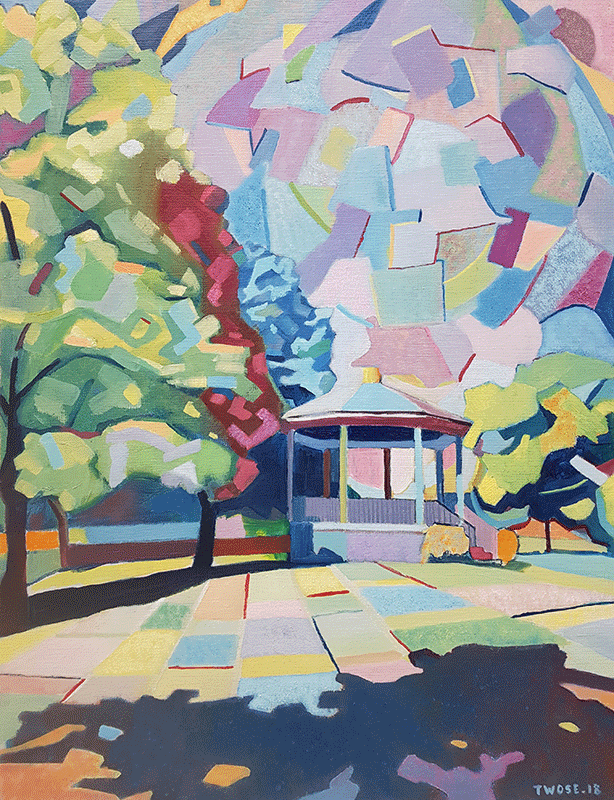
MB: What are you currently working on?
DT: My focus is the show [in Lake Forest] in May, but I also have three exhibitions right now: a solo show in a city called Bois-Colombes in a nice suburb of Paris. I am honored to be part of this show because the exhibition was juried by the city. The other is a group show that opened February 6th. I will also have a show in Deauville in an art fair in April. Then I have solo show, From Paris to Chicago, at The Gallery of Lake Forest (202 E Wisconsin Ave, Lake Forest, IL 60045). The opening is May 9th, and I will be exhibiting paintings of Paris and Chicago as well as Lake Forest and Lake Bluff.
MB: Have you achieved the goals that you've set for yourself when making this career shift?
DT: I think so, yes. Now there is bigger stuff to achieve. I want to be financially autonomous with my art. My first goal was simply to sell work. I did this during my first show. My friend and fellow artist, René Romero Schuler, actually bought my first piece. I sold to my close circle of friends and family first, then friends of family and friends of friends, and in June last year, I sold a painting to an American guy I’d never met before. My work was still at a hotel from a previous show, and he bought one of my paintings when I wasn’t even around. I was big step for me because he wanted to buy it for the work and not only to support me. Perhaps my friends loved my work, but perhaps they would have not bought if it were not mine. Since then I have sold more paintings to people that did not know, and that is really exciting!
MB: What are your plans for your future in the arts?
DT: I would love to be in a gallery. I want to find a way to live off my paintings, so I’m trying to find the way that I can do this. One of the options is to be represented in a gallery, perhaps in the USA since I feel connected to the energy and people there. Perhaps there are other options that I have to work on. So that will be the next step, and I think I will do it shortly. First I have visit and engage with different kinds of galleries to see if they are right for me. It’s all about meeting people.
